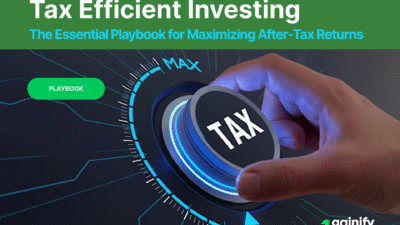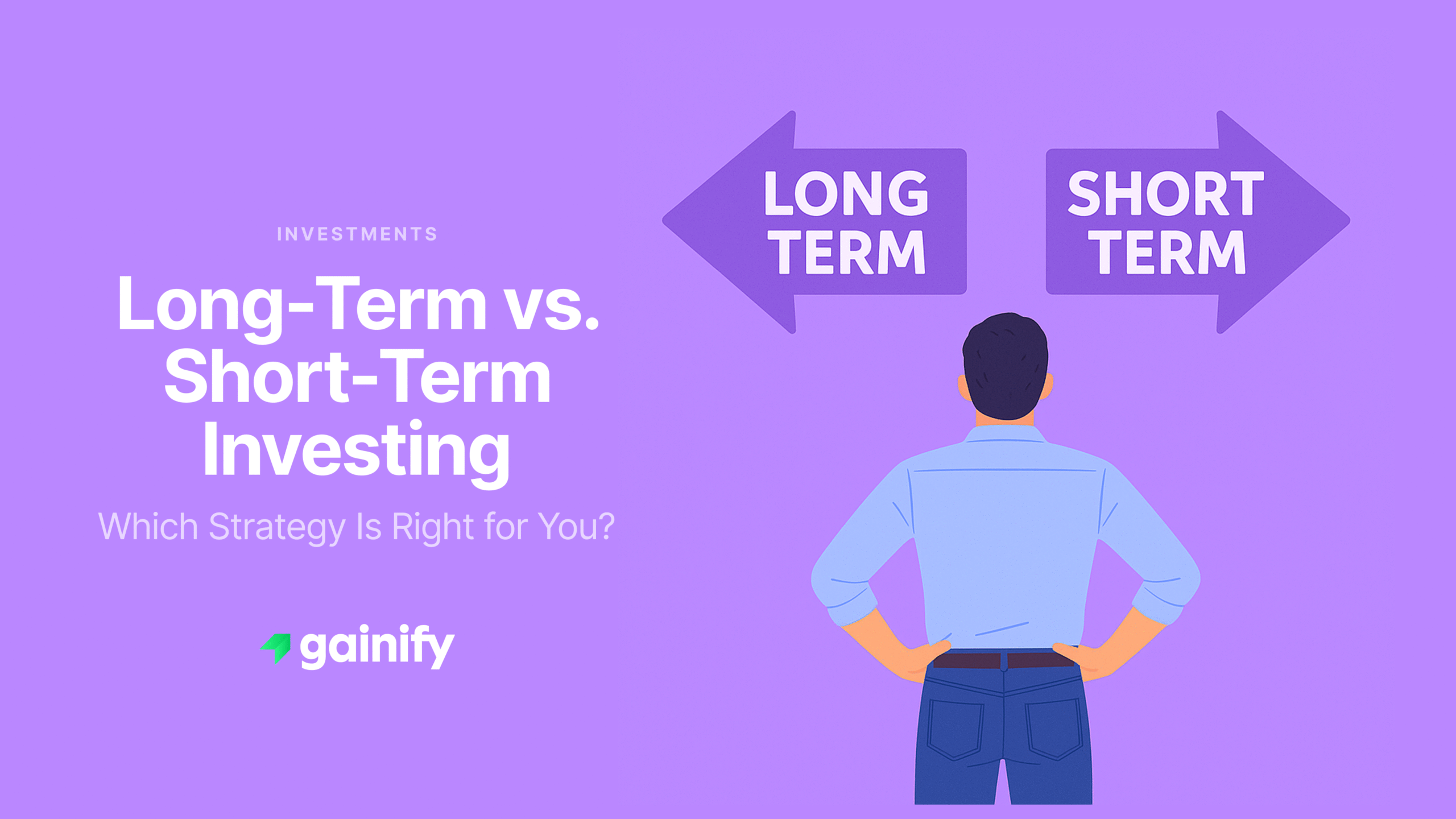Most people spend their lives working for money. But the real turning point in personal finance comes when you learn how to make your money work for you. This means putting your money into action, using smart strategies to grow your wealth without having to constantly trade time for income.
You don’t need a finance degree or a six-figure salary to start. You need a strategy. Whether that means opening a brokerage account, building passive income streams, or using automatic transfers to meet your savings goals, small, consistent actions can deliver long-term financial stability.
Financial tools have never been more accessible. You can invest in exchange-traded funds, mutual funds, and dividend-paying stocks, or use high-yield savings accounts and Certificates of Deposit for secure growth. These options are not just for the wealthy – they are for anyone looking to reach long-term goals like building an emergency fund, improving cash flow, or generating rental income.
In this guide, we’ll cover the essentials of building wealth step-by-step. We’ll explain what actually works, highlight what to watch out for, and even challenge a few popular opinions along the way.
Step 1: Start With a Strong Foundation
Before you start building investment portfolios or exploring advanced strategies like asset location investing, you need a solid financial base. Think of this step as laying the groundwork for everything else.
Begin with a clear monthly budget. Track your income, expenses, and savings goals. This gives you visibility into where your money is going and helps you control spending. Even a basic spreadsheet or a budgeting app can do the job.
Make saving automatic. Set up regular transfers from your checking account to specific savings goals. These might include:
- An emergency fund, with at least 3 to 6 months of living expenses
- Retirement accounts, such as a Roth IRA or 401(k)
- Short-term savings, held in a high-yield savings account or fixed-rate savings account
Keep your emergency fund in an interest-bearing account that earns some growth while remaining easy to access. Financial institutions often offer competitive interest rates for these kinds of accounts.
Address your debt. If you carry balances on credit cards or loans, now’s the time to reduce them. Not only will this boost your FICO score, it will free up cash flow for future investing.
There are two popular strategies:
- The Avalanche Method: Pay off debts with the highest interest rates first. This saves more money over time.
- The Snowball Method: Start with the smallest balances. This builds momentum and motivation as you see results faster.
Both strategies can work. Choose the one that best fits your mindset and situation. Either way, the goal is to reduce financial stress and open the door to long-term stability.
When you build a strong financial base by budgeting, saving regularly, and paying down debt, you can start investing with confidence instead of just trying to stay afloat.
Step 2: Invest Consistently, Even With Small Amounts
Start small. You don’t need a large windfall to begin investing. Even $50 a month, consistently invested, can snowball into meaningful long-term gains through dollar-cost averaging.
Start with foundational, low-risk tools:
- High-yield savings accounts
Great for parking cash while earning more than standard accounts. Ideal for building your emergency fund or short-term savings goals. - Certificates of Deposit (CDs)
Lock your funds in for a fixed period to earn a guaranteed interest rate. Use CDs for money you won’t need immediately but want to grow safely. - Cash management accounts
These combine the flexibility of checking with the yield of savings. Some brokerages offer them with sweep programs and FDIC insurance.
Once your savings behavior is solid, move into basic market investments:
- Index Funds
Mirror the broader market with low fees and strong diversification. Perfect for hands-off, long-term investing. - Exchange-Traded Funds (ETFs)
Similar to index funds, but tradable like stocks. They offer flexibility, low cost, and often better tax efficiency. - Mutual Funds
Professionally managed portfolios for those who want guidance without micromanaging their holdings. - Bond Funds or Preferred Stock
Offer more stability and predictable income. Best for those seeking capital preservation with modest returns.
Automate your progress.
Set up automatic transfers into your brokerage or retirement accounts. It removes emotion, enforces consistency, and builds habits that fuel long-term growth.
Stay calm during volatility.
Dollar-cost averaging works best when you’re consistent even when markets dip. Long-term wealth is built on discipline, not timing.
Step 3: Create Passive Income Streams
Earning money from your job is called active income. It depends on your time and energy. But passive income? That’s the money you earn with little to no daily effort. The goal is to build income streams that continue working, even when you’re not.
Here are a few ways to start, depending on your lifestyle and comfort with risk:
- High-dividend stocks
Now that you’ve built a portfolio, this is where dividend stocks shine. Focus on companies with strong balance sheets, reliable payout histories, and reasonable dividend yields. These stocks can provide steady cash flow, but remember: dividends are never guaranteed and can be cut in downturns. - REITs (Real Estate Investment Trusts)
Earn real estate exposure and consistent dividends without becoming a landlord. Many REITs pay monthly or quarterly and specialize in sectors like commercial properties, healthcare, or data centers. - Rental properties
A hands-on approach with potentially high rewards. Rental income can become a major cash flow source, but factor in property taxes, maintenance, vacancies, and tenant risk. - Peer-to-peer lending
Online platforms allow you to lend money to vetted individuals or small businesses. Returns can be attractive, but default risk is real. Only invest what you’re willing to lose. - Alternative assets (art, collectibles, niche funds)
These are speculative and illiquid. But if you have deep knowledge they can appreciate over time and diversify your income.
As income builds, reinvest with purpose.
Use surplus cash to grow new streams. Diversification across asset classes helps protect you from market changes and interest rate swings.
Optimize what you’ve built:
- Use tax-loss harvesting in taxable accounts to reduce your income tax burden.
- Apply asset location investing to place income-producing assets in the most tax-efficient accounts (e.g., REITs in IRAs, ETFs in brokerage).
- Maintain cash buffers in interest-bearing accounts to manage short-term needs while staying fully invested elsewhere.
Once you build one or more streams, don’t stop there. Use your growing passive income to reinvest in other opportunities. This keeps your momentum going.
Step 4: Protect What You Build
Building wealth is only half the journey. The other half is keeping it safe and making it work smarter. As your income grows and your investments gain momentum, you’ll want to focus on preserving your money, minimizing risk, and making sure your wealth continues to serve your long-term goals.
Here are smart ways to protect what you’ve built:
- Use tax-advantaged accounts to lower your tax burden
Accounts like Roth IRAs, 401(k)s, and Health Savings Accounts (HSAs) help you grow your money while shielding it from taxes. A Roth IRA, for instance, allows your investments to grow tax-free and be withdrawn tax-free in retirement. HSAs can be triple tax-advantaged for healthcare savings and even retirement if used wisely. - Consider whole life insurance with cash value
Unlike term insurance, whole life policies build cash value over time. This can be borrowed against or used strategically in retirement. These policies are complex and not for everyone, but for certain families, they can support estate planning, legacy goals, or serve as a back-up savings vehicle. - Explore advanced wealth-building frameworks
If you’re managing significant assets or thinking across generations, look into models like the Hierarchy of Wealth, Perpetual Wealth Strategy, or the Family Bank Strategy. These approaches help prioritize where to allocate capital and provide structure for long-term wealth transfer or family financing systems. - Automate bill payments and optimize rewards
Late payments can damage your FICO score and disrupt your financial plan. Automating your recurring bills adds reliability to your cash flow. Also, consider using cashback credit cards to earn value on everyday purchases. Just be sure to pay off balances monthly. - Ensure your cash is protected
Any money held in checking, savings, or cash management accounts should be covered by FDIC insurance. This guarantees your deposits up to legal limits in the rare event of a bank failure.
Why this matters:
Growing wealth without protection is like building a house without insurance. Market downturns, health emergencies, and unexpected costs can erase years of progress if you’re not prepared. With the right tools in place, you reduce risk and give your money a stable foundation to keep working even during volatile times.
Preservation strategies may not be flashy, but they’re the quiet backbone of long-term financial success.
A Contrarian View: Investing Isn’t Always Step One
Investing early is often hyped as the golden rule of wealth building. But in reality, it’s not always the smartest first move.
If you’re living paycheck to paycheck, carrying high-interest credit card debt, or have little to no emergency savings, throwing money into the stock market could do more harm than good. In these cases, focusing on stability is what truly pays off.
Start by building an emergency fund that covers at least 3 to 6 months of expenses. That single step can protect you from taking on more debt during a crisis and gives you the breathing room to think clearly about long-term financial decisions.
Next, tackle your debt strategically. Use methods like the Avalanche Method to pay off the highest-interest balances first, or the Snowball Method to build momentum by knocking out smaller debts. Either path frees up cash flow, lowers stress, and improves your credit over time.
Also, don’t fall into the trap of copying what you see online. Social media is full of bold financial claims, but most influencers don’t know your circumstances or even the full risks of what they’re promoting. It’s better to learn from people with deep expertise and a track record, whether that’s a certified financial planner, trusted book, or education platform built for long-term investors.
Final Thoughts: Let Your Money Earn While You Sleep
The goal is not just to earn more, but to earn smarter. Whether you’re starting with a Kindle app and learning from investment veterans or setting up a cash management account, the tools are out there.
You don’t have to get everything perfect on day one. Just get started. Focus on long-term goals. Build systems. Track your progress. Adjust for market changes. Keep learning and adapt to your circumstances.
From automating bill-pay to crafting a tax-efficient strategy, making your money work is about consistency and clarity.
Disclaimer: This article is for informational purposes only. It is not financial advice. Always speak with a licensed financial consultant or tax advisor before making decisions.
Accessibility statement: We aim to make financial education accessible to everyone. If you have specific needs or questions, consider reaching out to certified professionals or exploring trusted resources.
FAQs: How to Make Your Money Work for You
Q: Where should I begin if I want to build wealth?
A: Start with a budget, emergency savings, and debt reduction. These create space to invest with confidence.
Q: What’s the safest investment for a beginner?
A: Consider index funds or ETFs inside a Roth IRA. They’re low-cost and diversified.
Q: How can I build passive income?
A: Explore rental properties, REITs, dividend-paying stocks, or peer-to-peer lending. Even interest from Certificates of Deposit can be part of a passive income plan.
Q: Is delaying investing a bad thing?
A: Not always. Build a stable base first. Investing with confidence matters more than investing early without a plan.
Q: Should I manage finances on my own or get help?
A: For simple goals, DIY is fine. For complex plans, consider working with a financial consultant.




